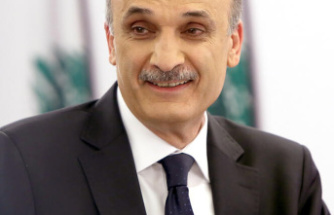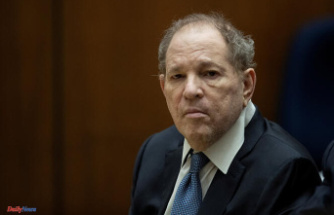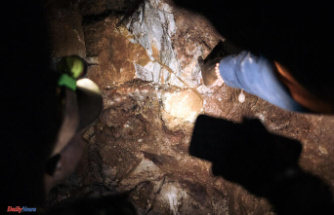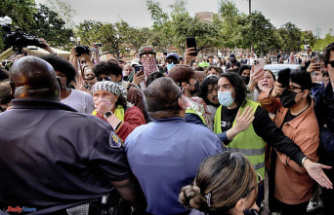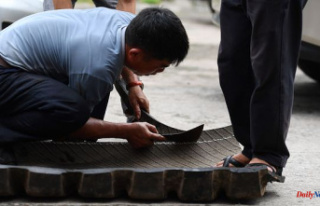GDR jokes about the "coffee mix" were perhaps even more bitter than its aroma. For example: “What is the difference between coffee mix and the neutron bomb? There is no. The cup stays whole, but the person breaks.” Or even without irony: “It is the purest rat poison.” The displeasure of the citizens surged so high during the “coffee crisis” in the GDR in 1977 that even the Ministry for State Security sounded the alarm .
And that's how it happened: Because soaring world market prices made it extremely expensive to procure coffee beans for the GDR, which was poor in foreign exchange, the SED Politburo decided on July 26, 1977 to introduce "coffee mix". The blend with only 51 percent roasted coffee not only made the coffee drinkers boil, but also the coffee machines exploded. There are still waves of inflation on the coffee market today - it was only at the beginning of 2022 that fears of crop failures in Brazil drove prices up sharply. What is remarkable, however, is the political crisis that arose from this in the GDR.
The Leipzig social scientist Anne Dietrich speaks of a caesura. A lack of credibility, a lack of information, poor quality and a hidden price increase ultimately "led to a legitimacy crisis for the socialist supply state," she writes in her essay "Coffee in the GDR - A First-Rate Political Issue."
This can hardly be understood without looking at the love of Germans in West and East for coffee. According to the German Coffee Association, everyone drinks 169 liters of coffee a year. It's more than just a hot drink, historian Volker Wünderich can tell you about it very vividly. When after the world wars instead of Muckefuck there was roasted coffee again, that stood for prosperity. Coffee is also a social life, says Wünderich, who researched the GDR coffee crisis years ago: "You can't invite people to a coffee gossip and then only offer malt coffee."
Coffee was also very expensive in West Germany at the end of the 1970s. But in the GDR planned economy, it was already in the luxury goods category before the crisis. A kilo of grain coffee cost one GDR mark there, while a kilo of roasted coffee cost up to 80 marks. He was drunk anyway, you treated yourself to something. You could save on bread, butter, sausage or cheese, which were dirt cheap thanks to subsidies.
The state party SED was well aware that real coffee is not only a pleasure, but also a symbol. Dietrich describes the efforts of the GDR superiors to get the coveted goods in barter deals with socialist states. For example, in 1977 the GDR delivered armaments to Ethiopia on the basis of “brown beans versus blue beans”. For this purpose, up to 10,000 tons of coffee should go from the North African country to the GDR - with an estimated annual requirement of around 50,000 tons.
The fact that it was still not enough was due to the chronic lack of foreign exchange in the GDR. The own currency did not count on the world market and D-Mark or Dollar were hard to get for the socialist state. In 1978, the "Zeit" wrote smugly about the SED's ingenuity in procuring hard currency, from overpriced rents for West German correspondents to the fees demanded for firefighting ships that accompanied West German barges during transit. Above all, however, the prescribed minimum exchange and the Intershop stores brought Westmark into the eastern coffers.
Nevertheless, the coffee import tore large holes in the currency reserves. So SED leader Erich Honecker complained: "I would just like to mention again that the import of green coffee alone costs us around 300 million dollars a year. It's not easy for us to spend it." So all that remained was "Erich's coronation" - the nickname for that hated "coffee mix" that the SED leadership came up with in the summer of 1977. One half is roasted coffee, the other half substitutes such as roasted peas, rye, barley or beet pulp.
The inferior mixture replaced the cheap coffee types "Kosta" and "Mocca-Fix Silber". Expensive roasted coffee varieties remained on the market. But the new mixture should also be served in canteens and cafés. There she glued the large coffee machines together, there were reports of explosions, outraged customers and unnerved waiters. Something was literally brewing.
The new type of coffee was "rejected by broad sections of the population," wrote the Stasi in a report dated September 1, 1977. The "buying tendency" was declining, "excess stocks" of the mixture, which after all consisted of half coffee, could lead to the fact that "considerable quantities of roasted coffee are not supply effective". In short: Nobody wanted the stuff.
The Stasi documents archive knows of 14,000 complaints from outraged citizens. Not only did people complain that coffee mix didn't taste good. They felt duped because it was half the coffee for almost the same price. There was a lack of information in the state media. That was not a political protest, but a consumer uprising, says historian Wünderich. "The whole thing was an economic disaster." Tons of the unsold coffee mix had to be destroyed. The experiment was stopped.
The GDR was helped out by the fact that in the following years the coffee market got moving and prices fell worldwide. The SED state also concluded an agreement with socialist Vietnam to expand coffee production there in the hope of cheap deliveries. And then there was the good old West parcel: it is estimated that parcels sent from the Federal Republic to relatives in the GDR covered around 18 percent of the total coffee consumption in the socialist German state.
You can also find "World History" on Facebook. We are happy about a like.


